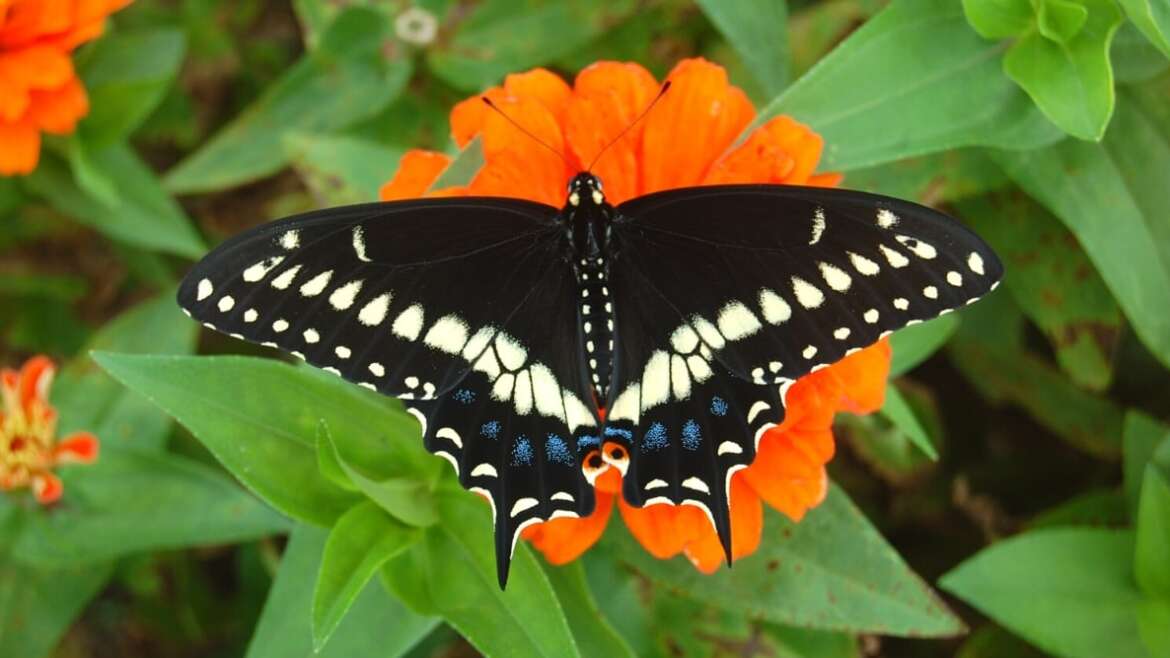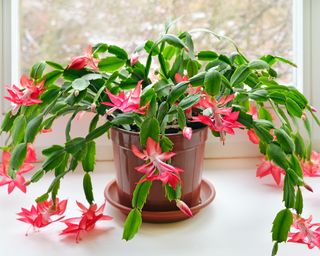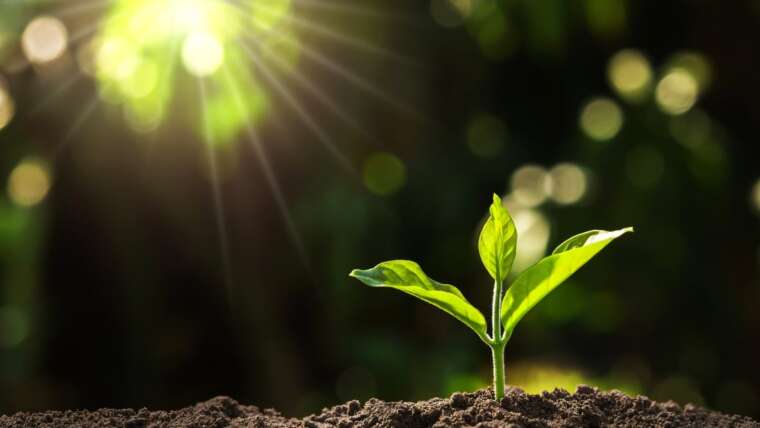Two types of host plants are important for butterflies. Larval host plants provide a food source for the caterpillars; the other type is plants that host the nectar for the adult butterfly. Together, these plants can act as butterfly attractants in your pollinator-friendly garden. If you’d like to attract butterflies to your garden, consider providing them with larval host plants as well to help support future generations.
If you wonder whether these butterflies are pests or pollinators, the answer is both! Nature rarely fits neatly into black-and-white categories. In their larval stage, the caterpillars will chomp on your plants. However, adult butterflies will provide wonderful pollinator benefits for your flowering crops.
The caterpillars also serve as a food source for other predators like birds and predatory wasps, which can help keep their populations in check and keep damage to your plants at the superficial level. As always, creating a healthy ecosystem includes attracting these mostly beneficial butterflies, even though it might mean sacrificing some dill to the caterpillars.
Let’s dig into the best host plants for butterflies and how to integrate them into your garden.
Eastern Black Swallowtail
The Eastern Black Swallowtail has dark black wings with yellow and blue spots.
The Eastern Black Swallowtail butterfly is found in most of the eastern United States, parts of Canada, and northern Mexico. Despite its name, it can also be found in parts of the Western United States, including Southern California, Nevada, Colorado, and New Mexico.
These butterflies are dark black with rows of yellow spots, a band of blue spots, and orange eyespots on their hindwings. Male and female swallowtails have slightly different markings (the females have more blue spots than the males). The young caterpillars are dark brown/black with a white band; as they grow, they will become black with white stripes and later turn bright green with black and yellow stripes.
The eggs are small, round, and yellow. They are generally laid singly, scattered around the host plant. These butterflies are beneficial pollinators in your garden, although you will want to plant some sacrificial plants for their caterpillars to munch on!
Parsley
 This herb is a favored host for black swallowtail caterpillars; consider planting extra for both caterpillars and your harvest.
This herb is a favored host for black swallowtail caterpillars; consider planting extra for both caterpillars and your harvest.
One of the preferred larval host plants for the black swallowtail butterfly is parsley. The black swallowtail caterpillars are sometimes referred to as parsley worms. The growing caterpillars can sometimes mow down a whole parsley plant in just a few days!
If you live in black swallowtail habitat, then you may want to consider planting extra parsley plants to provide some for the caterpillars and some for your harvest, or consider succession sowing your plants so that new plants are replacing the older plants are they get chomped on by these adorable caterpillars.
Fennel
 Eastern Black Swallowtail caterpillars prefer plants in the Apiaceae family, like parsley and fennel.
Eastern Black Swallowtail caterpillars prefer plants in the Apiaceae family, like parsley and fennel.
Eastern Black Swallowtail butterfly larvae favor host plants in the Apiaceae family, including fennel and parsley. The caterpillars generally munch on the fennel fronds and will not damage the bulbs.
The butterfly lays the eggs at a point in the season when the bulbs are mostly developed, so the appearance of the caterpillars shouldn’t affect your harvest too much. Before you pull your bulbs, watch for the swallowtail eggs.
Dill
 This popular pickle herb attracts Eastern Black Swallowtails with flowers for adults and foliage for caterpillars.
This popular pickle herb attracts Eastern Black Swallowtails with flowers for adults and foliage for caterpillars.
In addition to parsley and fennel, dill is another member of the Apiaceae family. It is also among the favorite host plants for butterflies. If you want a high chance of attracting Eastern Black Swallowtail butterflies to your garden, then dill is your best bet!
The reason is that dill does double duty when attracting these butterflies. The flowers act as forage for the adult butterflies, and the foliage is a food source for the caterpillars.
Dill is a magnet for Eastern Black Swallowtail butterflies! Since dill readily and voraciously self-seeds, you may grow it once and find it popping up all over your garden. Consider leaving a patch of dill standing for these butterflies!
Phlox
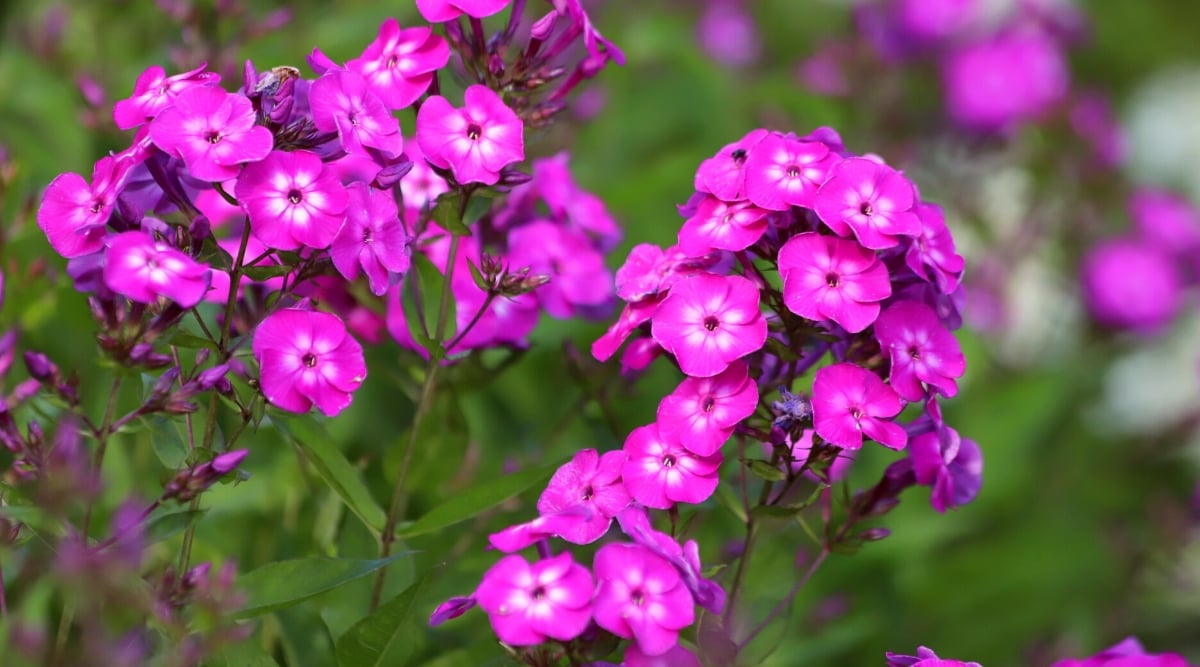 Phlox varieties attract adult butterflies, making them ideal additions to pollinator gardens.
Phlox varieties attract adult butterflies, making them ideal additions to pollinator gardens.
The aforementioned plants act as host plants for the larval stage of butterflies. However, if you want to attract adult butterflies to your garden, then try adding phlox to your pollinator garden.
This perennial flower has many varieties, including garden phlox, creeping phlox, and moss phlox. There are over 68 phlox species native to North America, so you’ll surely find a variety best suited for your garden!
Gaillardia
 Blanket flowers, part of the daisy family, attract adult Eastern Black Swallowtails and spread prolifically in gardens.
Blanket flowers, part of the daisy family, attract adult Eastern Black Swallowtails and spread prolifically in gardens.
Also known as blanket flower, this is another source of forage that adult black swallowtail butterflies prefer. These perennial flowers are in the daisy family and are native to North and South America.
They are prolific self-seeders that you can plant once and will spread across your gardens for years to come.
Long-Tailed Skipper
 These butterflies are found in tropical regions and have brown wings with glassy spots and blue-green bodies.
These butterflies are found in tropical regions and have brown wings with glassy spots and blue-green bodies.
The Long-tailed Skipper butterfly can be found in tropical and subtropical South America, south to Argentina, and north into the eastern United States and southern Ontario. These butterflies have brown wings with large glassy spots.
Their bodies are iridescent blue-green, and they have long, prominent tails. Their overall appearance has been described as not quite butterfly, but also not quite moth. The caterpillars will appear yellow-green with black speckling and a black dorsal line with a yellow lateral band. The eggs are small and yellow and either laid singly or in small groups.
Bean Plants
 Long-tailed Skippers as bean leafrollers may be pests to bean plants but cause mostly superficial damage.
Long-tailed Skippers as bean leafrollers may be pests to bean plants but cause mostly superficial damage.
These butterflies often begin their life cycle as caterpillars that can be considered pests to bean plants. For this reason, the caterpillars are commonly called the bean leafroller. The name leafroller comes from the fact that they cut and roll over little leaf pockets to hide in while in their larval stage.
They are considered an agricultural pest in the southwestern United States. This designation may be somewhat undeserved as the damage they cause to bean plants is usually superficial and insignificant.
Pea Plants
 Long-tailed Skippers also prefer legume family plants like peas in warmer seasons.
Long-tailed Skippers also prefer legume family plants like peas in warmer seasons.
These butterflies prefer not only bean plants but other host plants in the legume family, like peas. You may occasionally find caterpillars on your pea plants, though this is not quite as common as bean plants since peas tend to grow in the cooler part of the season before the long-tailed skipper lays its eggs.
Still, it is not out of the realm of possibility, especially if you can grow peas later into the season, like early and mid-summer.
Hog Peanuts
 These legumes are native to North America, favored by Long-tailed Skippers, and have an edible taste like green beans.
These legumes are native to North America, favored by Long-tailed Skippers, and have an edible taste like green beans.
Hog peanuts are a native plant to North America and are also in the legume family. While not typically grown in a home garden, they can still be found growing wild in eastern North America and into Canada, which is the same range as the long-tailed skipper.
So, it makes sense that this plant would be favored as one of their larval host plants. Hog peanuts are edible and taste similar to green beans.
Wisteria
 This leguminous vining plant has cascades of blue-purple flowers and attracts Long-tailed Skippers and other pollinators.
This leguminous vining plant has cascades of blue-purple flowers and attracts Long-tailed Skippers and other pollinators.
Wisteria is a vining plant that blooms spectacular cascades of blue-purple flowers. But better still, it is in the legume family, attracting the adult Long-tailed Skipper butterfly! It can provide nectar and forage for other pollinators too.
However, certain types of Chinese wisteria are particularly prolific spreaders and are considered invasive. Some types are native to the Eastern United States, so be sure to plant a native species to avoid introducing invasives into your local ecosystem. To keep wisteria in check, prune it twice a year.
Bougainvillea
 These flowers thrive in hot climates, attracting adult long-tailed skippers in their South American habitat.
These flowers thrive in hot climates, attracting adult long-tailed skippers in their South American habitat.
Many different varieties of bougainvillea range from ornamental vines to bushes and trees. These tropical plants thrive in hot and dry climates and thus attract the adult Long-tailed Skipper in its South American habitat, where bougainvillea is perennial.
They can be grown as perennials in most southwestern-US locations or as annuals in much of the rest of the United States. Those in colder climates may be able to grow them outdoors in containers and bring them indoors to overwinter.
Mexican Sunflower
 These sunflowers thrive in hot climates and attract adult Long-tailed Skippers, hummingbirds, and pollinators.
These sunflowers thrive in hot climates and attract adult Long-tailed Skippers, hummingbirds, and pollinators.
Also known as tithonia, this host plant is well suited to hot and dry climates. It is a favorite of adult Long-tailed Skipper butterflies. These flowers are easy to grow from seed and attract many pollinators, hummingbirds, and butterflies.
You may choose to grow Mexican sunflowers alongside your bean or pea plants if you live in the range of the Long-tailed Skipper and would like to provide them with an ideal habitat!
Cloudless Sulphur Butterfly
 These butterflies live year-round in the Southeast. They have a bright yellow appearance and attraction to red flowers.
These butterflies live year-round in the Southeast. They have a bright yellow appearance and attraction to red flowers.
The Cloudless Sulphur butterfly lives year-round in Argentina, the West Indies, and the Southeastern United States (from Texas to the Southeast). Some migrating populations can extend as far west as Colorado and north as New Jersey. These butterflies are bright yellow and easy to spot!
The caterpillars are bright green with yellow lateral lines and blue spots. Their eggs resemble a tiny grain of white or yellow rice. They lay them singly around the edges of leaves. Adult butterflies are extremely attracted to the color red, so much so that they will sometimes dive bomb red tail lights.
Partridge Pea
 The partridge pea plant is a favorite host plant for Cloudless Sulphur butterflies. They are toxic to humans but enjoyed by grassland birds.
The partridge pea plant is a favorite host plant for Cloudless Sulphur butterflies. They are toxic to humans but enjoyed by grassland birds.
Partridge peas are a favorite larval host plant for Cloudless Sulphur butterflies. This plant is native to the southeastern United States, the same habitat this butterfly shares.
These yellow flowers are grown for ornamental purposes only and are not edible. Much like sweet peas, they are toxic to humans and livestock. Still, several species of grassland birds eat them.
Senna hebecarpa
 Cloudless Sulphur butterflies prefer American senna, a native legume with yellow-orange flowers.
Cloudless Sulphur butterflies prefer American senna, a native legume with yellow-orange flowers.
Also known as American senna or wild senna. The Cloudless Sulphur butterfly gets its species name (Phoebis sennae) from its preference for this plant. Like partridge peas, it is also in the legume family and native to eastern North America.
Its light yellow-orange flowers bloom from July to August in woodlands in its native habitat. This ornamental plant can be a perennial wildflower in wildlife gardens, natural landscaping, and habitat restoration projects.
Bahama cassia
 This shrub has yellow flowers providing nectar for adult butterflies and food for caterpillars.
This shrub has yellow flowers providing nectar for adult butterflies and food for caterpillars.
This shrub is native to South Florida, the Caribbean, and South America. It only grows in USDA zones 9 and 10. The yellow buttercup flowers act as a nectar source for adult butterflies and a food source for the larval caterpillars.
This perennial shrub prefers well-drained, acidic, sandy soil and is moderately drought-tolerant. It can also tolerate salt spray and grows wild in mangroves and along shorelines. In these warmer zones, it will flower for most of the year.
Scarlet Creeper
 The scarlet creeper is a vining plant with deep red flowers that attract Cloudless Sulphur butterflies and hummingbirds.
The scarlet creeper is a vining plant with deep red flowers that attract Cloudless Sulphur butterflies and hummingbirds.
This vining plant produces flowers in the favorite color of the Cloudless Sulphur butterfly: deep red! This plant is in the same family as moonflowers and morning glories and has a similar growth habit that will require trellises or another type of support for its climbing vine.
The flowers also resemble the shape of moonflowers, though they are smaller and have a very deep red color. This vine is native to tropical and warm temperate parts of the Americas. This flower will attract butterflies and hummingbirds alike!
Tropical Sage
 Red salvia produces deep red flowers that attract Cloudless Sulphur butterflies.
Red salvia produces deep red flowers that attract Cloudless Sulphur butterflies.
Also known as scarlet sage, red salvia, or blood sage, this sage variety produces deep red flowers that the Cloudless Sulphur butterfly can’t resist!
This perennial wildflower is native to the southeastern United States, Mexico, Central America, the Caribbean, and northern South America. Despite the name “sage,” this plant is not edible and is grown for ornamental purposes.
Painted Lady
 This widespread butterfly is found on almost every continent, with scalloped orange wings and black spots.
This widespread butterfly is found on almost every continent, with scalloped orange wings and black spots.
The Painted Lady is the most widespread butterfly in the world. It can be found on every continent except Australia and Antarctica. In North America, it is found from subarctic Canada south to Panama. It has scalloped orange wings with black spots. The undersides of the wings are mottled gray, brown, and black.
The small spiny caterpillars are grayish-brown or purple-black with yellow side stripes. Adults lay pale green tiny eggs lay singly on the undersides of leaves.
Hollyhocks
 A member of the mallow family, hollyhocks are a favored larval host for Painted Lady caterpillars.
A member of the mallow family, hollyhocks are a favored larval host for Painted Lady caterpillars.
Hollyhocks are in the mallow family, a favorite plant family as larval host plants for Painted Lady butterflies. Their tall stems produce blooms from the base of the plant to the top. The spires of flowers that these plants produce can reach heights of up to 8 feet!
This makes them a great backdrop for your butterfly garden. They come in a wide range of colors, including pink, red, white, yellow, and even black!
Thistles
 Often seen as weeds, thistles benefit native habitats, serving as food for Painted Lady butterflies and small birds.
Often seen as weeds, thistles benefit native habitats, serving as food for Painted Lady butterflies and small birds.
Though often maligned as a weed, thistles provide many benefits in their native habitats. They are a preferred food source for adult Painted Lady butterflies and are loved by small birds, especially the American Goldfinch, which eat the seeds.
Some invasive, non-native thistles are considered noxious weeds. Still, many native varieties provide as much food and habitat as any other flower in your wildflower garden.
Although you may not want to plant thistle in your garden because of its spiky foliage and difficulty in controlling its spread (think tiny puffy seeds that spread on the wind much like a dandelion), there is a member of the thistle family that can provide all of these benefits and provide you with food as well!
That’s right, artichokes are in the same family, and when left to flower, they produce purple thistle-like flowers that also attract bees, birds, and butterflies. So maybe harvest a few artichokes and leave the rest to flower for the butterflies.
Asters
 Cold-hardy asters with daisy-like flowers bloom from mid-summer to fall and are loved by Painted Lady butterflies.
Cold-hardy asters with daisy-like flowers bloom from mid-summer to fall and are loved by Painted Lady butterflies.
Asters are cold-hardy perennials with daisy-like flowers. They bloom in response to the shortening in day length, which occurs from mid-summer and into fall. Asters will self-seed and spread, so they’re great for filling in empty patches in the butterfly garden.
You can deadhead them if you’d like to limit their spread. Cut them back to the ground in the fall, and they will come back to life in the spring. The adult Painted Lady butterfly loves these flowers!
Hibiscus
 Cold-hardy hibiscus has a tropical appearance and is suitable for in-ground and container gardening.
Cold-hardy hibiscus has a tropical appearance and is suitable for in-ground and container gardening.
Hibiscus is also in the mallow family and is related to the above-mentioned hollyhock. Hibiscus has a tropical appearance; however, some varieties of these perennial flowers are quite cold-hardy. Grow them in-ground or in containers; they can be a great choice for patios and decks.
Hibiscus has been the national flower of Malaysia since 1960. Not only does the island nation of Malaysia love this flower, but the Painted Lady butterfly does too!
Gulf Fritillary
 Gulf Fritillary butterflies are found in the Southern U.S. They are orange with black markings and lays eggs on passion flower vines.
Gulf Fritillary butterflies are found in the Southern U.S. They are orange with black markings and lays eggs on passion flower vines.
The Gulf Fritillary lives in the southern United States and south into Mexico, Central America, the West Indies, and South America. This butterfly is orange with black markings.
Their bodies are long, slender, and orange with white stripes and orange eyes. The caterpillars are also orange-brown with black spines. Their tiny yellow eggs are often laid on passion flower vines in small groups. Right before the egg turns into a larvae, it turns dark orange.
Passion Flower
 The passionflower vine is the preferred host plant for Gulf Fritillary butterflies.
The passionflower vine is the preferred host plant for Gulf Fritillary butterflies.
Passionflower is the preferred larval host plant for Gulf Fritillary caterpillars. They are sometimes called the passion flower butterfly!
There are over 550 species of passion flowers. Most grow as tendril-producing climbing vines, but some grow as shrubs or small trees. Passionflowers are not only stunning to look at, but they also produce edible fruit.
Verbena
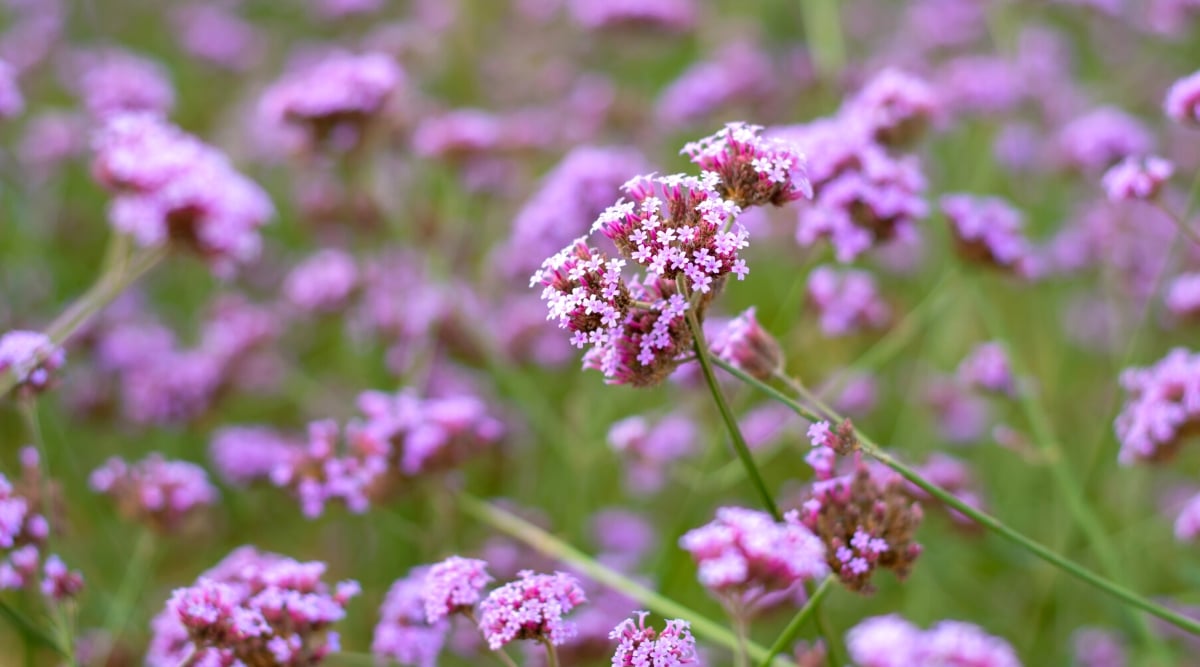 Loved by Gulf Fritillary butterflies, verbena offers small flower clusters, heat tolerance, and long blooming.
Loved by Gulf Fritillary butterflies, verbena offers small flower clusters, heat tolerance, and long blooming.
Also known as vervain, this plant produces clusters of small flowers that many butterflies love, including the Gulf Fritillary. There are both annual and perennial varieties of verbena.
These plants are long-blooming and heat tolerant. With their long blooming season, they are often a food source for butterflies when not much might be around.
Lantana
 A prolific bloomer in red and orange, lantana attracts Gulf Fritillary with its nectar source and is easy to transplant.
A prolific bloomer in red and orange, lantana attracts Gulf Fritillary with its nectar source and is easy to transplant.
Lantana is a prolific bloomer that produces tiny clusters of red and orange flowers. It does well in hot and dry areas; the Gulf Fritillary loves them as a nectar source.
These butterflies specifically love red and orange flowers. Lantana flower clusters usually contain both colors! Lantanas are easy to transplant, making them a great ready-made nectar source for the butterfly garden.
Zinnias
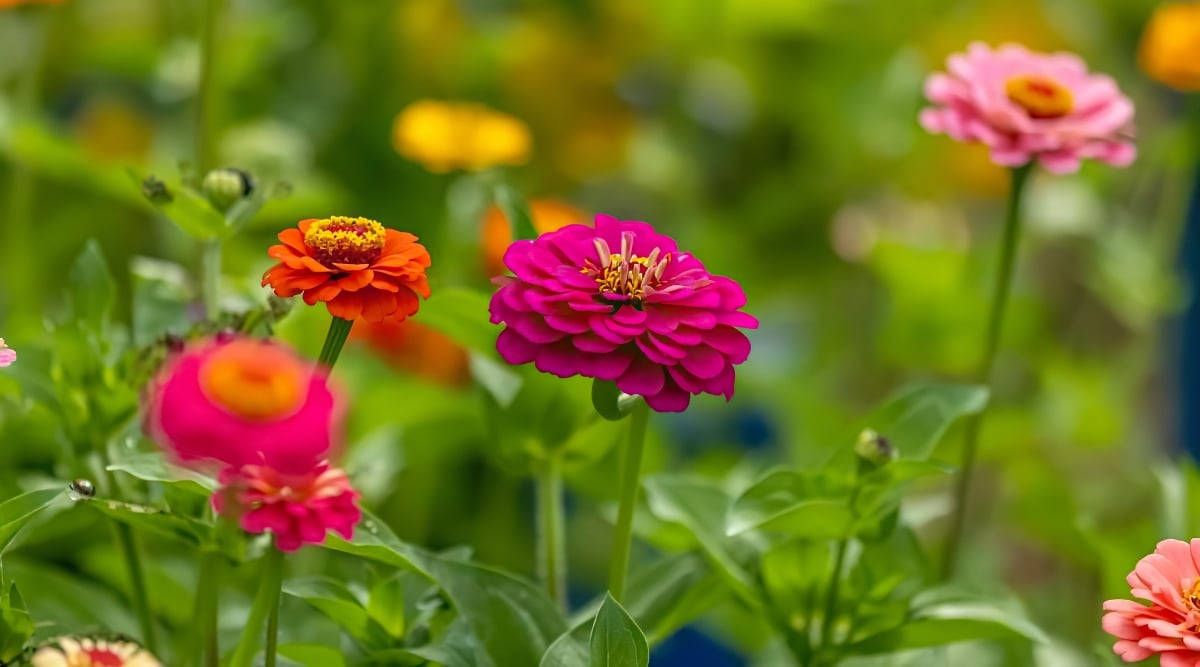 Gulf Fritillary butterflies love large zinnia flowers, especially red and orange types.
Gulf Fritillary butterflies love large zinnia flowers, especially red and orange types.
Large zinnia flowers make a great nectar-rich landing site for Gulf Fritillary butterflies. As mentioned above, they are specifically attracted to red and orange types.
Hummingbirds love them as well! Zinnias are easy to grow from seed. Scatter some seeds in an empty spot in your garden and enjoy your zinnia patch and the butterflies it will attract.
Monarch
 These reknowned butterflies span the U.S. in summer and migrate to Mexico in winter.
These reknowned butterflies span the U.S. in summer and migrate to Mexico in winter.
Monarch butterflies can be found across the entire United States during the summer and migrate south to Mexico in the winter. There are two migratory populations. One migrates from Mexico into the eastern United States, east of the Rocky Mountain range, and one migrates from Mexico into the western United States, west of the Rockies.
The Monarch butterfly is one of the most widely recognizable butterflies thanks to efforts to bring them back from endangered species status. They have brilliant red-orange wings with black veins and white spots along the edges.
Viceroy butterflies are known as a lookalike to the Monarch, with the visual difference being the black stripe across its hindwings. Monarch caterpillars are striped yellow, black, and white. Monarch eggs are tiny, white, and have longitudinal ridges. Find them on the underside of milkweed leaves.
Milkweed
 Monarchs and milkweed have a mutual benefit, as Monarchs become toxic from eating milkweed, deterring predators.
Monarchs and milkweed have a mutual benefit, as Monarchs become toxic from eating milkweed, deterring predators.
Milkweed and monarchs have an especially symbiotic relationship. Milkweed is toxic, which is advantageous for the Monarch caterpillars. They eat the milkweed and become toxic themselves, thus discouraging birds and other animals from eating them.
The Monarch butterfly is also toxic if consumed by a bird or other animal. This is believed to be why mimics of the Monarch, like the Viceroy butterfly, exist. They are trying to appear as if they are toxic if consumed, although they are not.
Many different types of milkweed are native across the United States. A quick internet search will tell you which type is native in your area.
Coneflowers
 Echinacea attracts adult Monarch butterflies with their tough, low-maintenance, native perennial blooms.
Echinacea attracts adult Monarch butterflies with their tough, low-maintenance, native perennial blooms.
Also known as Echinacea, coneflowers are tough perennials that attract adult Monarch butterflies. The plants produce cone-shaped flowers with a dark brown pincushion center.
Most coneflower species are native to the eastern and central United States. This wildflower makes a great low-maintenance addition to a butterfly garden alongside milkweed.
Goldenrod
 This ragweed look-alike attracts Monarch butterflies and pollinators with its heavy pollen grains.
This ragweed look-alike attracts Monarch butterflies and pollinators with its heavy pollen grains.
Goldenrod often gets mistaken for ragweed, which is the culprit of many seasonal allergies. This is because goldenrod blooms simultaneously to ragweed and has a similar appearance. However, many butterflies, bees, and other pollinators depend on goldenrod.
Ragweed has small tiny grains of pollen easily carried off by the wind, thus causing seasonal allergies. Goldenrod has big heavy grains of pollen that require pollinators to carry them off and are a favorite of Monarch butterflies.
Cosmos
 A daisy family member, Cosmos attracts Monarchs with nectar-filled blooms.
A daisy family member, Cosmos attracts Monarchs with nectar-filled blooms.
This member of the daisy family attracts Monarch butterflies with its profuse blooms that are abundant with nectar. Cosmos are extremely easy to grow from seed. They can be started indoors and transplanted outdoors or directly sown.
The seeds need light to germinate, so scatter them on the soil’s surface and keep them evenly moist. They will also readily self-seed, so you will have them popping up in your butterfly garden for years to come.
Butterfly Bush
 Unsurprisingly, the butterfly bush attracts adult Monarch butterflies with its lilac-like appearance and extended bloom time.
Unsurprisingly, the butterfly bush attracts adult Monarch butterflies with its lilac-like appearance and extended bloom time.
As its name would suggest, butterfly bush is an excellent choice for attracting butterflies, specifically adult Monarch butterflies.
The appearance of this shrub is similar to the more commonly known lilacs, with spikes of small tubular flowers that are easy for butterflies to land on. Unlike lilacs, butterfly bush has a longer bloom time.
Lilac
 The fragrant blooms of lilac attract early-season butterflies and hummingbirds. You can also use them in the kitchen.
The fragrant blooms of lilac attract early-season butterflies and hummingbirds. You can also use them in the kitchen.
Lilacs have an intoxicating scent that signals the height of spring! Their short-lived blooms provide forage for butterflies early in the season when not much else is blooming yet. Their small, pale purple, tubular flowers are favorites of butterflies and hummingbirds. Not only do they smell beautiful and look beautiful, but they’re also edible. They can be dried, used in teas and baked goods, or infused into sugars or jars of honey.
Final Thoughts
Butterflies are not only beautiful to observe; they play an important role in your local ecosystem and garden as pollinators. Providing them with nectar-rich flowers and larval host plants can help us create and keep a balanced ecosystem as well as provide us with the chance to witness the beauty in nature.
Observing the life cycle of caterpillars, from tiny butterfly eggs to larvae, to full-grown caterpillars, chrysalis, and finally butterflies, is such a treat too! If you invest in host plants that support the butterflies in your area, you’ll be rewarded with these pollinators floating through your garden on many summer days.


